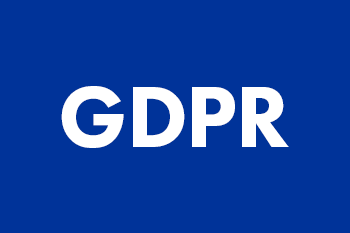Discovering mold in your home can feel like a homeowner’s worst nightmare. It’s unsightly, potentially harmful, and spreads if you so much as blink at it. A common question upon this discovery is, “Can I clean mold myself, or should I hire professionals?” At first glance, the do-it-yourself (DIY) route may seem appealing—cost-effective and immediately actionable. However, the decision isn’t always as straightforward as it seems. Let’s discuss what tackling mold remediation yourself entails versus when it’s time to call in the experts.
What Is Mold
Mold is a fungus that grows in filaments, spreading and reproducing through tiny spores that float through the air. Invisible to the naked eye, these spores can begin to grow on surfaces when they land in moist and warm areas. While mold is a natural part of the environment and plays a crucial role in breaking down organic matter, it becomes a significant health and structural issue when it colonizes indoors. Keeping indoor environments clean, dry, and well-ventilated is essential for preventing mold growth and protecting health.
When Is DIY Mold Removal Advisable?
-
Small Areas: If the mold covers an area less than about 10 square feet (roughly the size of a standard sheet of plywood), it’s considered safe for a DIY approach.
-
Non-Porous Surfaces: Mold on hard, non-porous surfaces such as glass, metal, or tiles can usually be cleaned without professional help.
-
Preventive Measures: DIY efforts can effectively address the cause of mold, such as fixing leaks and improving ventilation, to prevent future growth.
DIY Mold Cleaning Techniques
-
Protect yourself with gloves, a mask, and eye protection.
-
Use a mixture of water and detergent to scrub the mold off non-porous surfaces.
-
Dry the area thoroughly to prevent the mold from returning.
-
Dispose of any moldy materials in airtight bags.
Health Hazards from Molds
-
Allergic Reactions: Mold exposure can trigger sneezing, itching, runny nose, red eyes, and skin rash in sensitive individuals.
-
Respiratory Problems: It can cause coughing, wheezing, and shortness of breath, exacerbating conditions like asthma or leading to new respiratory ailments.
-
Toxic Effects: Certain molds produce mycotoxins that can pose serious health risks when ingested, inhaled, or come into contact with the skin. Exposure to high levels of mycotoxins can lead to neurological problems and, in some cases, death.
-
Mental Health Impact: Mold exposure can also affect mental health, contributing to issues such as anxiety, depression, and chronic fatigue syndrome. People living in mold-infested environments may experience stress and sleep disturbances, exacerbating these conditions.
-
Other Health Issues: Severe reactions may include fever and shortness of breath. People with compromised immune systems or chronic lung diseases may develop serious lung infections.
When to Call in Professional Mold Remediation Services
There are circumstances where DIY methods are insufficient and potentially hazardous. For instance:
-
Large Infestations: If the mold covers an area larger than 10 square feet, the EPA recommends seeking professional help.
-
High-Risk Individuals: In homes with residents vulnerable to mold-related health issues, professional remediation is advised to ensure thorough cleaning and minimum exposure.
-
Mold in HVAC Systems: Mold in heating, ventilation, and air conditioning systems requires professional cleaning to avoid spreading spores throughout the home.
-
Uncertain Origins: If you need help identifying the mold growth’s moisture source or extent, professionals can help uncover hidden mold and water damage.
When dealing with a mold infestation in your home or business, it’s essential to call in the experts who can assess the situation, identify the extent of the mold infiltration, and devise a remediation plan. PuroClean mold removal services are well-equipped with the necessary expertise and tools to ensure that the mold is thoroughly removed and measures are implemented to prevent its future return.
What Professional Mold Remediation Looks Like
Professional mold remediation goes beyond simply cleaning the visible mold. A comprehensive approach typically includes:
-
Assessment and inspection to identify all mold-affected areas.
-
Containment procedures to prevent the spread of mold spores during cleanup.
-
Air filtration to capture airborne mold spores.
-
Removing mold-infested materials.
-
Cleaning, sanitizing, and treating all surfaces.
-
Restoring the affected areas to pre-mold condition.
Professional remediation often goes hand in hand with property restoration. After mold is removed, structures may need repair or replacement. Expert services from companies like PuroClean of Davie provide mold remediation and can assist with restoring your property to its pre-damage state. This could involve replacing drywall, painting, or even significant repairs in cases of extensive water damage.
The Connection Between Mold and Water Damage
Mold growth and water damage are closely linked. Understanding and addressing the root cause—often some water intrusion—is crucial. Whether it’s a leaky roof, high humidity, or the aftermath of flooding, addressing water damage promptly can prevent mold from starting or returning.
That’s where services specializing in water damage restoration, such as PuroClean in Weston, FL, come into the picture. They can tackle the water damage that feeds the mold and the mold itself, ensuring your home is both dry and clean.
Final Thoughts
Choosing between DIY mold removal and professional help depends on the mold’s size, location, your health, and the affected surfaces. Small, manageable issues can often be tackled at home, but larger infestations, tricky locations, or households with health vulnerabilities warrant expert intervention. Professionals ensure complete mold removal and address root causes like water damage, aiming to maintain a safe, healthy home environment.

